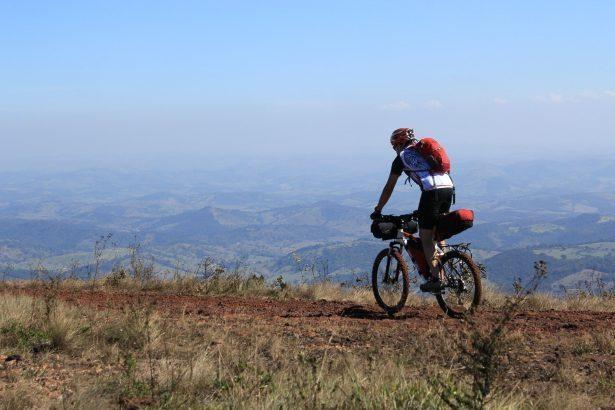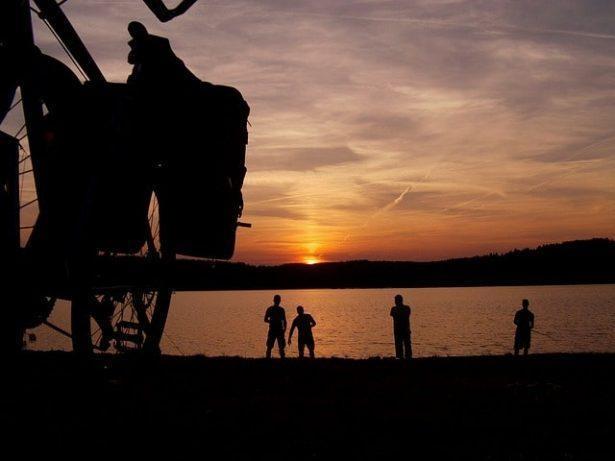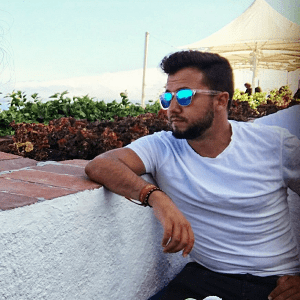
As you know, bikepacking is a “light” cycle touring modality where you carry on your bike all the stuff you need for your journey, and it is perfect for weekend micro-adventures or even for long trips (weeks or months) for the more adventurous, both off-road and on-road.
Bikepacking can be practiced anywhere, but if you had to choose a perfect place to practice it, that could be Spain due to its geography, with landscapes that combine mountains with beaches, hills with rivers, mythical mountain passes, and a very friendly population ready to help and welcome every adventurous cyclist.
At this point, it would be rare of not being familiar with bikepacking. It is in full expansion and becoming increasingly important in the world of bicycle crossings. Therefore, in this article, we bring you the best 7 trails on the way to bikepacking in Spain and some tips for our adventurous readers. Let’s go there:
TOP 7 TRAILS FOR BIKEPACKING IN SPAIN:
Transpirinaica:

Let’s start with the Transpirinaica, the queen of all off-road (and on-road) cycling routes. We cannot even think of missing this route from our list of best bikepacking trails in Spain.
It has several perfect alternatives for bikepacking, bicycle touring with saddlebags, and even for double suspension for the most experienced bikers.
Riding the Pyrenees from east to west, from the Mediterranean coast, more specifically from Llança, to Hondarribia on the Cantabrian coast.
A challenge for cyclists in good shape and experts, who will have to travel a total of 1000km climbing the greatest mountain passes of Spain with several peaks that exceed 2000 meters in altitude. At the end of the route, your legs will have climbed more than 27,000 meters of accumulated ascent.
This trail can be done both ways and they will leave your legs hard as steel. The positive is that when it is finished, you can take a relaxing bath in the sea as a reward for the effort made.
- Recommendable Bike: Touring and mountain bike
- Region: Cataluña, Aragon, Basque Country (Pirineos area)
- Difficulty: Experts
- Better season: Spring and Autumn
- Stages: 17 days
More info in the next links:
http://www.transpirinaica.com/
https://es.wikiloc.com/rutas-mountain-bike/transpirenaica-en-btt-llanca-hondarribia-2016-13706577
Camino de Santiago
In this article, we are going to recommend two different “Camino de Santiago”. The first is the one that runs through northern Spain, starting in Hondarribia.
In this case, you pedal along the coast until you reach Ribadeo, where the route deviates towards Santiago de Compostela.
Along the trail of almost 900km and 14,000 meters of accumulated ascent, you will visit cities such as San Sebastian, Bilbao, Santander and Gijon until you reach Santiago.
This route is very busy by pilgrims who want to visit the cathedral of Santiago and could be described as moderate due to the final accumulated kilometers, although big mountain passes are not climbed, and the highest peak is about 700 meters high.
A highly recommended route and full of history, where we will find very green landscapes and many beaches on the Cantabrian coast.
- Recommendable Bike: All type of bikes
- Region: Basque Country, Cantabria, Asturias, Galicia (Cantabrian Coast)
- Difficulty: Moderate
- Better season: Spring and Autumn
- Stages: 12 days
You can find more info in the next link:
https://es.wikiloc.com/rutas-mountain-bike/camino-de-santiago-del-norte-huyendo-del-asfalto-8585352
Vía de La Plata
The second of the trails that drives to Santiago in this article will begin in Seville and cover the Via de La Plata, crossing the towns of Caceres, Salamanca, and Zamora, and then take the footpath of Sanabres that will take us to Santiago de Compostela, crossing the Iberian Peninsula from south to north through 1000 km of dry landscapes in the south and gradually greener as we travel the route.
This Camino de Santiago, along with the Camino del Norte (also described in this article) and the Camino Frances, is the most traditional way by which pilgrims reach Santiago by bike, thus making it an ideal bikepacking trail.
This trail can be described as moderate in difficulty, with a total ascent of 12,000 meters, and could be completed in 16 stages.
- Recommendable Bike: Touring, gravel and mountain bike
- Region: Andalucía, Extremadura, Castilla y León, Galicia. (Western Spain )
- Difficulty: Moderate
- Better season: Spring and Autumn
- Stages: 16 days
Info about the route in the next link:
https://es.wikiloc.com/rutas-mountain-bike/via-de-la-plata-camino-sanabres-sevilla-santiago-6428044
Transcantabrica
Trail dedicated to mountain biking and only for expert cyclists due to the huge total ascent of the route, 32,000 meters, and the hardness of it.
An adventure that begins in Ambasmestas, and runs throughout the Cantabrian mountain range from west to east, to end in the Basque country in Irurtzun, a total of 900 km that will shake your legs climbing mountains higher than 1500 meters.
You will be amazed by the mountainous and wild landscapes of this region of Spain where they will take your body and mind to the extreme.
- Recommendable Bike: Mountain bike
- Region: Galicia, Castilla y Leon, Asturias, Cantabria, Pais Vasco
- Difficulty: Experts
- Better season: Spring and Autumn
- Stages: 12 days
More info in the next link:
Vuelta a Mallorca
The next proposal as a great bikepacking route is to go around the island of Mallorca, with departure and arrival to the capital of the island, Palma de Mallorca, and a route of about 500km and I000 meters of accumulated ascent along the route.
A route that can be done in 9 days in which mountainous landscapes to the north of the island are combined such as “la Serra de Tramuntana” with some of the best beaches on the island such as “Plaja des Trenc” or small coves such as “Cala d’Or “to the south.
An ideal adventure to do in spring and enjoy the charm of the island of Mallorca with pleasant temperatures, although it could be traveled in any season of the year.
This route can be described as moderate/difficult because there are quite flat areas, but you also have to cross the Sierra de Tramuntana, where you climb to the highest point of the Vuelta a Mallorca, very close to the highest peak of the Island, the Puig Major.
- Recommendable Bike: Gravel, Touring, Mountain Bike
- Region: Mallorca, Islas Baleares
- Difficulty: Moderate / Hard
- Better season: Spring
- Stages: 9 days
You can find more info about the route in this link.
GR247
This is a short loop that can be covered in 4 or 5 days, located in the Sierra de Cazorla, Andalucia, and offers 300km of mountainous terrain and a total ascent of 9000 meters and meet some traditional villages of Andalusia.
The route encircles the Natural Park, enjoying many natural places of interest and putting in value a multitude of footpaths.
- Recommendable Bike: Gravel and Mountain bike
- Region: Jaen, Andalucia
- Difficulty: Moderate
- Better season: Spring
- Stages: 4 days
More info about the trail in the next links:
https://bikepacking.com/routes/gr247-spain/
https://es.wikiloc.com/rutas-mountain-bike/gr247-sierras-de-cazorla-segura-y-las-villas-11565505
Altravesur
Our last route for this article was created by Logan Watts, creator of bikepacking.com. This route crosses, from Cadiz to Valencia, 1300 km of roads and trails, and 35,000 meters of accumulated ascent.
Natural parks such as the Sierra Nevada and Sierra de Cazorla are crossed along the route, in addition to cozy villages.
It is a relatively young bikepacking trail but it can be one of the most complete in Spain and Europe.
- Recommendable Bike: Gravel and Mountain bike
- Region: Andalucia
- Difficulty: Moderate / Expert
- Better season: Spring and Autumn
- Stages: 20 days
More info clicking on the next links:
https://bikepacking.com/routes/altravesur-bikepacking-route/
https://es.wikiloc.com/rutas-mountain-bike/mi-altravesur-37213942
OUR TIPS FOR BIKEPACKING:

The first thing you should know is your level on the bicycle. If you do not have much skill, it is not advisable to make routes of great demand.
Little by little you can increase the difficulty of the route and in this way, you can enjoy much more by completing bikepacking trails.
The essential thing you should take with you:
- A light tent, inflatable mattress, and sleeping bag
- A stove and light cutlery
- Freeze-dried or dried foods
- Personal hygiene items and a First Aid Kit
- A good flashlight
- A GPS or a map
- A solar charger or an external battery
- The essential tools to repair the bike
- And water, lots of water since Spain is very warm and you must keep yourself hydrated!
Images: pixabay.com (magnifiqus, northpak, www_gutedrucke_de)

I am Luis Pedraza, Spanish engineer based in Poland for work right now. I used to take place in BTT races in my region when I was younger and now I enjoy the Sierra de gredos and El pielago on my Orbea MX when I visit my hometown. Addicted to Cycling Manager, I used to write about football and cycling on the Internet.


